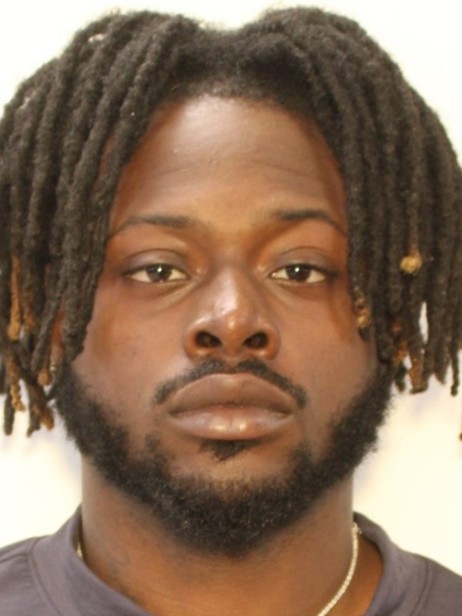Locals speak out against gas pipeline
Published 8:16 am Wednesday, October 7, 2015

- Chris Mericle of Hamilton County says damage to karst terrain cannot be mitigated and a pipeline poses significant sinkhole threats.
The Federal Energy Regulatory Commission (FERC) held a public meeting on Thursday, Oct. 1, in Columbia County to take public comments on the draft environmental impact study (DEIS) regarding the proposed Southeast Market Pipelines (SMP) project. This project includes the Sabal Trail Transmission, LLC portion of the pipeline slated to cut through Suwannee and Hamilton counties and much of Central Florida.
John Peconom, an environmental manager with FERC and one of the authors of the DEIS, briefly explained the pipeline projects to the crowd at Columbia High School’s auditorium. The roughly 650-miles of combined pipelines will deliver 1.1 billion cubic feet of natural gas per day for use in the Southeastern U.S. market.
The DEIS is used to examine the environment the pipelines will go through, potential impacts on that environment, and what the SMP companies plan to do to mitigate those impacts. Peconom stated the DEIS is not a decisional document but rather an informative one, meaning no decisions on the pipelines have been made yet.
Peconom added the reason the meeting wasn’t being held in Suwannee or Hamilton counties is because FERC was unable to find any suitable facilities in which to hold the public meetings in those areas. He stated FERC will consider hosting public meetings in those counties should there be another round of meetings.
Nearly two dozen people spoke when the floor was opened to the public, the majority of them in opposition to the SMP. A few union associates, Daniel Kurzzi and Larry Jordan, advocated for union workers to handle construction and operation of the pipelines should the project go through, while a development manager asked for reconsideration of the pipeline’s route to avoid his Ocala property. FERC has noted that pipeline construction would benefit local economies by creating jobs, prompting local purchases and increasing tax revenue.
One man, Rocky Stewart, explained he owned property near the Florida Sheriffs Boys Ranch but lives in Texas where he works in the oil and energy business as a drilling fluids engineer.
“I’m sure some people here regard me as the enemy, but I am in total opposition to what you all have planned,” Stewart said, addressing FERC reps. “What you all have proposed is total insanity.
“I have no faith in experts because experts lie,” Stewart went on to say. “I have lied in my job because that’s just the name of the game. You have a 2,000 page report put together by nameless people. Sabal Trail—nobody will bear any personal responsibility. FERC—same thing. Something goes wrong? ‘Not our problem.’ I’m sure you will have geologists come out and say, ‘No, we’ve studied the situation. Nothing we did led to this, it was a naturally occurring event.’ If you lose your home or the use of your property—if you’re old, you’ll be dead before it’s settled. If you’re young, you’ll be old before it’s settled. The experts and the attorneys will have a field day. The companies, they don’t care. It’s just greed and arrogance. This aquifer, this area, was millions of years in the making. If you go through with this, you stand a very good possibility of destroying this area for the rest of our lifetimes and for many lifetimes to come.”
Many other speakers were members or leaders of environmental advocacy groups such as Our Santa Fe River and the WWALS Watershed Coalition.
Hamilton County residents Chris and Deanna Mericle stressed the dangerous impacts to karst terrain that drilling could create, like sinkhole induction. Deanna stated the SMP serves no benefit to local citizens but they will ultimately be the ones to bear the consequences of it.
The DEIS has stated that “Sabal Trail will not significantly impact karst terrain, springs or the Floridian aquifer with its construction or operations.” FERC, in the DEIS, has found Sabal’s construction techniques and operation plans in karst areas to be acceptable.
Our Santa Fe River President Pam Smith urged FERC to reconsider the SMP’s route and the pipeline altogether, saying once the Floridian aquifer, which supplies 60 percent of all groundwater used in Florida, is impacted it will never be the same again.
“Why go through an area that you could potentially destroy?” Smith asked.
WWALS Watershed Coalition President John Quarterman asked the crowd if they felt insignificant, citing the DEIS’ findings that the SMP’s environmental impacts would be “less than significant”. Quarterman, as well as several other speakers, advocated for the move towards solar energy in Florida, the “Sunshine State”.
“In less than 10 years when most of the power, if not all, in the U.S.’s electrical grid is coming from sun, wind and water, the companies still pushing fossil fuels in the year 2015 and those who aid and abet them will be seen like the tobacco company executives still pushing cigarettes to children when they know full well they cause cancer,” Quarterman said. “FERC’s process is completely broken. I say to the FERC commissioners—if you don’t want to be remembered on the wrong side of history, do the right thing and deny this pipeline.”
Quarterman and WWALS are behind a hearing filed against Sabal Trail planned for Oct. 19-22 in Jasper or Live Oak, which could potentially halt the project if WWALS is favored, Quarterman said.
Suwannee County resident Debra Johnson mentioned numerous health risks associated with living near a natural gas compressor station.
“Scientific studies have recently shown that people that live within one mile of a small compressor station have experienced asthma, nose bleeds, headaches, rashes, elevated levels of formaldehyde (which is a carcinogen), increased mortality for people over 65, and double the risk of autism in expectant mothers in the third trimester,” Johnson stated.
David Shields, a man who raises livestock organically in the O’Brien area of Suwannee County, said the proposed compressor location is downwind of his home, less than 2,000 feet from his front door. He has six children, and within his neighborhood there are 23 children altogether, he said. Shields said he will be the face of the people in this high-risk area, stating an incident at the station could very well kill his family.
“This is just silly—the risk that we have to the aquifer, the risk to our water, the direct risk I’m going to have to take when I breathe everyday,” Shields said.
The DEIS has stated Sabal Trail won’t pose a significant adverse impact to local communities.
Another Suwannee County resident, Donna Ellison, lives between Falmouth Springs, a first magnitude spring, and the Suwannee River and said the proposed pipeline would go about 100 yards beside her home and through the backyard of her grandchildren’s home. Ellison said the area she lives in is prone to sinkholes, with one recently opening up in the path of the proposed pipeline.
“This is a land that we felt proud of to pass on to our children, to our grandchildren,” Ellison said. “They’re not going to want to live here. They’re not going to want this thing right there beside them that could blow up or harm them or their children. What are we going to do? It worries us. It scares us to death. We just don’t know what to do. We just want you to do something.”
Sabal Trail has stated that FERC “found no evidence that sinkhole development poses a safety risk for the pipeline” nor that “property values would diminish as a result of a pipeline.”
Live Oak resident Harry Gentes said it was “ludicrous” to gamble water against energy. He stated moving natural gas under a river would inevitably lead to an explosion or gas leak, potentially damaging Florida’s water supply and tourism industry.
“Please, don’t ruin Florida,” Gentes added.
Comments may be submitted to FERC until Oct. 26 via electronic filing, mail or speaking at other public meetings. For more information, visit www.ferc.gov or look up “Sabal’s proposed pipeline impact ‘less than significant’ on environment” on www.suwanneedemocrat.com.





